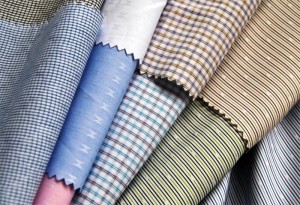There are more and more textiles on the market. Nylon and polyester are the main clothing textiles. How to distinguish nylon and polyester? Today we will learn about it together through the following content. We hope it will be helpful to your life.

1. Composition:
Nylon (Polyamide): Nylon is a synthetic polymer known for its durability and strength. It is derived from petrochemicals and belongs to the polyamide family. The monomers used in its production are primarily diamines and dicarboxylic acids.
Polyester (Polyethylene Terephthalate): Polyester is another synthetic polymer, valued for its versatility and resistance to stretching and shrinking. It belongs to the polyester family and is made from a combination of terephthalic acid and ethylene glycol.
2. Properties:
Nylon: Nylon fibers are known for their exceptional strength, abrasion resistance, and elasticity. They also possess good resistance to chemicals. Nylon fabrics tend to be smooth, soft, and quick-drying. They are often used in applications requiring high durability, such as sportswear, outdoor gear, and ropes.
Polyester: Polyester fibers are valued for their excellent wrinkle resistance, durability, and resistance to mildew and shrinkage. They have good shape retention properties and are relatively easy to care for. Polyester fabrics may not be as soft or elastic as nylon, but they are highly resistant to environmental factors such as sunlight and moisture. Polyester is commonly used in clothing, home furnishings, and industrial applications.
3. How to Distinguish:
Check the Label: The easiest way to identify whether a fabric is nylon or polyester is to check the label. Most textile products have labels indicating the materials used in their construction.
Texture and Feel: Nylon fabrics tend to feel softer and more supple compared to polyester. Nylon has a smoother texture and may feel slightly more slippery to the touch. Polyester fabrics, on the other hand, can feel slightly stiffer and less flexible.
Burn Test: Conducting a burn test can help differentiate between nylon and polyester, although caution should be exercised. Cut a small piece of the fabric and hold it with tweezers. Ignite the fabric with a flame. Nylon will shrink away from the flame and leave behind a hard, bead-like residue known as ash. Polyester will melt and drip, forming a hard, plastic-like bead.
In conclusion, while both nylon and polyester offer excellent performance characteristics, they have distinct properties that make them suitable for different applications.
Post time: Mar-02-2024
